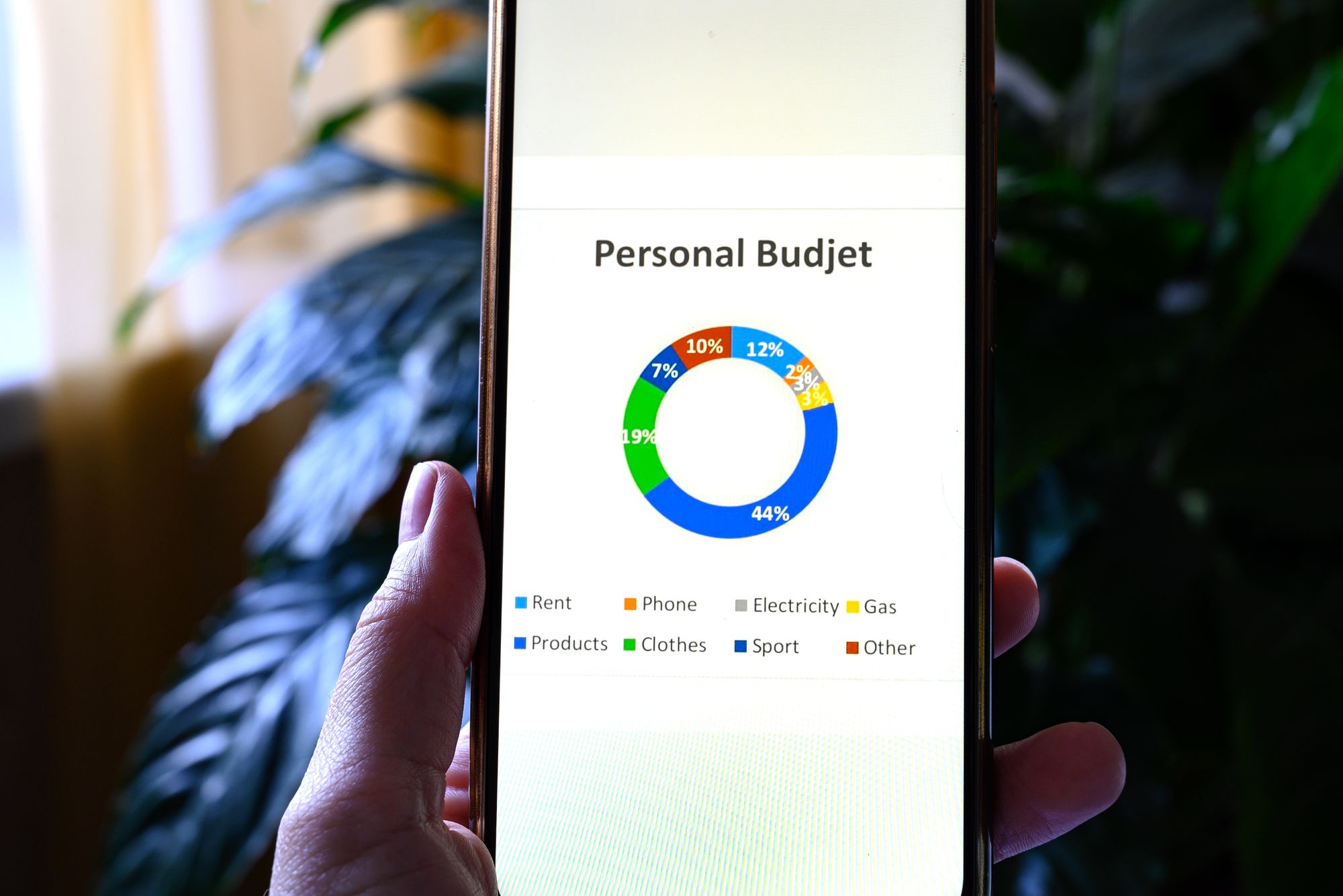Personal Finance Simplified: Where to begin and how to build wealth?

In today's world, there are a wide range of investment options available to everyone. Terms like debt, equity, leverage, inflation and interest rate have found their way into family discussions.
A good income and career no longer guarantee the financial security that past generations enjoyed. Instead, a good understanding of the available options for financial investments and a thorough plan with clear goals are key to achieving financial success.
Here is a simplified, step-by-step framework that you can use to get started with your personal finance journey.
Step 1: Set Clear Financial Goals
The first step in creating a simple personal finance plan is to define your financial goals. Start by setting both short-term and long-term objectives. These goals could include:
- Emergency Fund: Building an emergency fund to cover three to six months of living expenses.
- Debt Reduction: Paying off high-interest debts, such as credit cards or loans.
- Savings: Saving for major life events like a home purchase, education, or retirement.
- Investing: Growing your wealth through investments in stocks, bonds, or other assets.
- Budgeting: Creating a budget to manage your daily expenses and live within your means.
Clearly defined goals will serve as the foundation for your financial plan and provide motivation to stick with it.
Step 2: Create a budget and track your spending.
The first thing you'll need to do is to set a budget and start tracking your spending.
Let's start with liabilities first :
Recurring expenses :
- Housing.
- Car.
- Utilities.
- Insurance.
- Kids.
- Discretionary spend - restaurants, clothes, entertainment, other purchases online and offline.

Recurring expenses toward savings :
- Medical.
- Retirement.
- College.
- Create separate buckets/funds for individual big ticket items (see below) Use online calculators and allocate funds towards these expenses based on your income levels.

Big ticket items :
- Pay off any loans/debt.
- Buy a car.
- Get married.
- Buy a house.
- Expensive vacations.
Income allocation :
Create a budget that allocates your income toward each of the items above and track and balance the budget each month.
Congratulations ! You've now taken care of basic savings for healthcare, college, housing, car and retirement. You are ready to start investing.
Step 3: Start early and invest wisely.
Start investing any excess income that you may have each month.
Types of basic investments :

1. Real estate. 2. ETFs 3. Mutual Funds 4. Bonds. 5. CDs
How to pick investments ?
Consider 2 main factors before you invest. 1. Time - how long before you need the funds invested, 2. Risk - higher the risk, higher the reward. Pick your risk based on how much you can afford to lose.
Financial Security :
The goal you're working on as you go through above steps is financial security. Once you have completed and fully funded these steps, you'll be financially comfortable or secure.
Step 4: Wealth Building.
You have all your liabilities funded, you should start building wealth. In this phase, since you are financially secure, you can start re-assessing and taking risks both in income sources as well as in investment types.

Income sources :
As you progress in your personal finance journey, you should also actively work toward increasing your income. There are several things you can do to increase your income. Here are some ideas: 1. Get a pay raise 2. Switch jobs and get a higher paying job 3. Switch careers 4. Side gigs 5. Multiple income streams 6. Passive income
You can simultaneously pursue more than one way to increase your income. In addition to increasing your income and creating multiple income streams, you should also create passive income sources during the wealth building phase.
What is passive income ?
Simply put, passive income is income that comes with doing any active work. Although technically, all investments require some oversight and no income is purely 100 percent passive. That being said, the goal is to create income streams that require minimal time and effort.
Some examples of passive income streams are: 1. Interest income 2. Rental income (semi-passive) 3. Online sales 4. Affiliate marketing

High risk investments
High risk investments generate higher returns and often require higher skill in understanding and picking the investment.
Some examples of high risk investments are : 1. Buy a business 2. Cryptocurrencies 3. NFTs 4. Derivatives trading (futures and options) 5. Angel Investing
Risk versus reward :
Risk versus reward is the careful evaluation of potential gains against the possibility of losses, a continuous dance that shapes investment choices, savings strategies, and long-term financial plans. For some, the allure of high returns drives them to explore riskier assets, while others seek the security of conservative investments. Balancing this equation is a testament to one's financial goals, risk tolerance, and the desire for financial growth.
In general, asset classes that offer higher returns will also come with higher risks. As you enter into the wealth building phase of your personal finance journey, you can take on more calculated risks and explore high risk asset classes.
Cryptocurrency and NFT investments

Cryptocurrencies as an asset class is becoming mainstream and gaining popularity. Crypto investments are highly volatile and hence very risky, but they come with the potential of higher returns.
Possible passive income streams with cryptocurrency investments
1. Lending 2. Staking 3. #nft royalties 4. #yield farming
Accredited investor
In the US, access to some high risk investments are restricted to accredited investors. These investments are very risky and investors can face heavy losses. Accredited investors are expected to be skilled and experienced and therefore deemed capable of taking on higher risks.
Who is an accredited investor ?
An accredited has to meet a specified set of criteria. They should have one of the following : 1. Net worth > $1 Million 2. Single income > $200 K 3. Joint income > $300 K.
Individuals who meet all the criteria specified in the SEC website, can apply to become an accredited investor. Once approved, you will be able to invest in asset classes that are restricted to accredited investors.
✍ Terminology Friday: Accredited Investor
— VentureSouth (@VentureSouth_VC) November 3, 2023
See here for the full criteria for being accredited: https://t.co/hZTIxb4qF3 pic.twitter.com/zJOjV6W2SA
Step 5: Learn basic finance.
As you progress in your personal finance journey, particularly into the wealth building phase, it is advisable to educate yourself on basic finance and taxes.
Here is a list of items that you can learn about :
1. Interest rate 2. Inflation 3. Time value of money 4. Taxes 5. Cryptocurrencies
Additional Tips for Financial Success
In addition to the core steps of a personal finance plan, consider these tips for financial success:
1. Automate Your Savings: Set up automatic transfers from your checking account to your savings or investment accounts. This ensures you consistently save or invest without thinking about it.
2. Minimize Unnecessary Expenses: Identify and cut unnecessary expenses from your budget. Small savings add up over time.
3. Eliminate High-Interest Debt: Pay off high-interest debt as quickly as possible to reduce interest costs.
4. Take Advantage of Employer Benefits: If your employer offers retirement plan contributions or other benefits, make sure to take full advantage of them.
5. Diversify Investments: Diversification is key to managing risk. Spread your investments across different asset classes to reduce exposure to a single market's ups and downs.
6. Continuously Educate Yourself: Keep learning about personal finance, investments, and financial planning. Knowledge is a valuable tool for making informed decisions.
Conclusion: Your Path to Financial Freedom
Personal Finance cheat sheet
1. Start NOW! 2. Set your goals. 3. Make a budget. 4. Track your net worth. 5. DYOR ( do your own research )
A simple personal finance plan is the foundation for achieving financial security and prosperity. It provides a roadmap to help you reach your goals, whether they involve saving for retirement, buying a home, or getting out of debt. Remember that financial success is a journey, and your plan can evolve as your circumstances change. By setting clear goals, budgeting wisely, saving and investing, you're on the path to financial freedom and a secure future.




